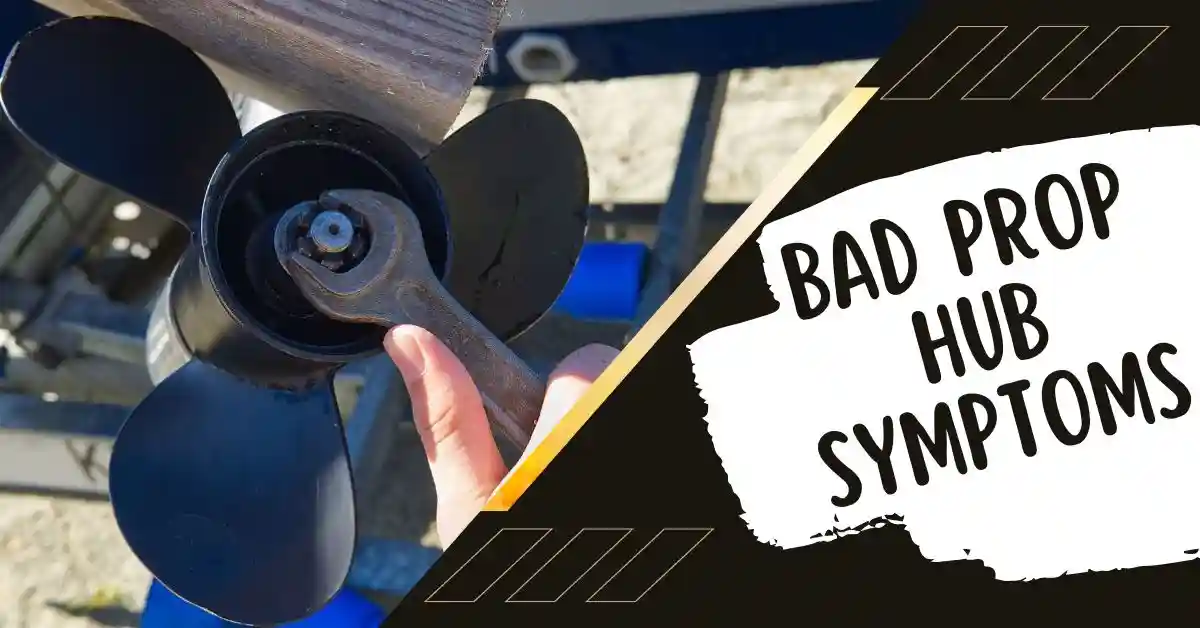The dock needs your return at this time. There is a lot of engine revving when you let off the throttle. But the boat isn’t moving.
Or perhaps there is barely any motion at all as if the engine’s propeller were missing. You turn off the motor and raise the drive to ensure the prop is still in place. So, what’s the deal?
An alternative option is a bad hub for your propeller. It means the hub has broken and the engine is no longer turning the propeller.
What are the bad prop hub symptoms?
If your boat planes slowly and the hub slips, it may have a bad propeller. Slipping and delaying at high RPM are also symptoms of a bad prop hub. Pitchy noise and terrible performance are both signs of a faulty prop hub. If you find these symptoms, you have to fix the prop hub.
Please read the entire article if you’re interested in this topic.
Table of Contents
ToggleHow Can I Tell If My Boat Has a Bad Prop Hub?
In most cases, a bad prop hub can be identified by simply looking at the rubber hub. But there are some telltale signs that can help you spot the problem even if you don’t.
When plane-ing your boat takes longer than usual and the hub slips, you may have a spun propeller.
Symptoms of a Boat with a Bad Prop Hub
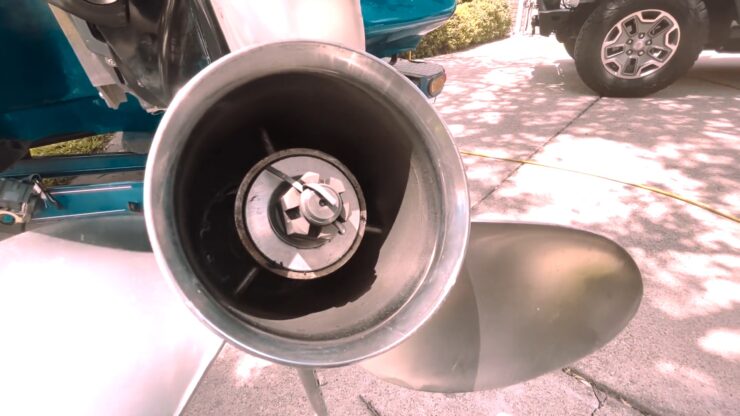
It is common for the following symptoms to accompany a spun prop or hub on a boat or outboard motor. Identifying the following symptoms will lead you to whether you have to repair or replace damaged props.
1. The Prop Hub Slips and the Boat Does Not Plane
In most cases, the boat can’t get on the plane. Because of a broken propeller or a bad or spun prop hub.
The propeller spins independently of the hub when the hub becomes dislodged from inside the blade. Propeller hub slippage during spins is visible because the propeller and hub are out of sync.
2. Decreased Velocity and Power at High RPM
You also may notice a delay in acceleration or a decrease in speed at high RPM. Then it’s a good bet that your prop hub has spun.
If you pay attention, you’ll see that there is a lot of noise. Also, the engine revs but has very little forward motion.
Propeller slipping at high RPM is hard to deal with. However, the good news is that you can still propel your boat toward the nearest landside.
3. Dreadful Results in Terms of Performance
The quality of your boat and fuel economy may suffer. It happens if your boat’s propeller fails to keep the engine in the correct RPM range. If that happens, you know there’s a problem with your inbuilt prop hub.
The boat’s lack of responsiveness may also manifest itself during acceleration and directional changes. Some users reported that the prop hub made a faint but discernible vibrating noise when in use.
4. Way Too Much Pitch Noise
Prop pitch is the distance your propeller cuts through the water per revolution. It may be difficult to gain speed if your boat has an excessive pitch.
At slower speeds, you’re actually exerting more effort. The boat’s propeller issues might get under a lot of strain as a result of this.
The pitchy noise indicates that you may have a bad prop hub. It could be fixed by a pro. But it could also be worn out and in need of a propeller’s rubber hub replacement.
Repairing a bad prop hub is cheaper and possible. If you know what you’re doing, the task should take you no more than ten minutes.
What To Do If You Find a Bad Prop Hub
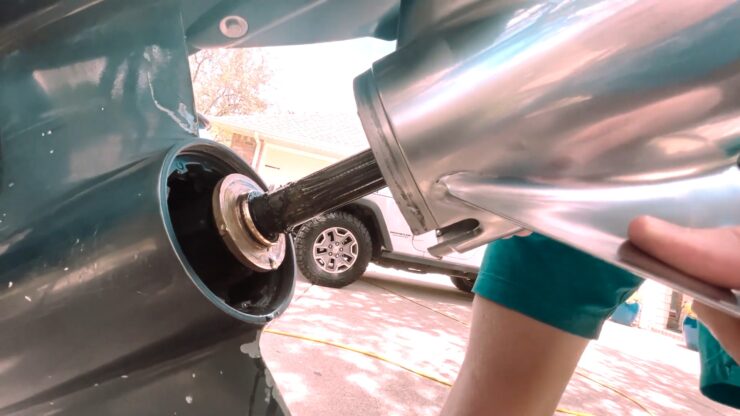
Make sure to take the following simple steps whenever you experience any of the signs. The symptoms we’ve already described. So, let’s jump into it-
Step 1: Check How Much Damage Has Been Done
Check to see if a replacement prop hub is actually needed before making the investment. Pull the prop off and look for signs of damage. Such as frayed or burnt rubber, to determine if it needs to be replaced. Signs of damage can indicate a bad trigger outboard.
Use a permanent marker to draw a line across the inner and outer surfaces of the end cap. Then, replace the prop and run it at full speed for two or three minutes.
After that, you can stop the machine and examine the drawn line. The hub must be changed if the line is misaligned.
Step 2: Check the Bore of the Propeller Very Carefully
The next step is to inspect the propeller bore for cracks or other obvious damage.
If the propeller’s bore isn’t perfectly spherical, you can’t fix it by replacing the prop hub. You’ll need to get a new propeller.
Step 3: Size, Specifications, and Equipment to Dispose of Old One
If you still want to switch, you can do it yourself or hire someone. The correct insertion funnel can be determined by measuring the hub bore before beginning the job. By measuring the hub, you can also identify Michigan Propeller.
The next step is to place the propeller in the right funnel. Push the hub with the hub driver that corresponds to your propeller. Push the old one through the propeller and into the funnel for disposal.
Step 4: Updating from an Older Prop hub to a Newer One
Make sure the ram is level and square with the press table before installing the new one. If you press a new prop hub on a conventional table, it will be off-center.
Properly supporting the propeller is the next step. It’s followed by applying lubricant to the insertion funnel and hub driver.
Try inserting a funnel into the propeller and twisting it. See if it turns freely after you’ve lubricated the threads. The new prop hub installation is complete if you can freely rotate it.
What’s the Typical Cost to Replace a Boat’s Bad Prop Hub
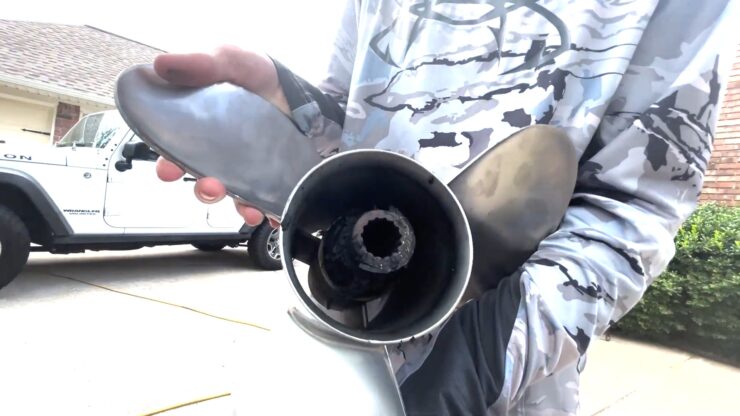
Bad prop hub replacement or repair is cheaper and technically feasible. This figure varies based on the make, model, and location of your boat’s motor.
The cost to replace a prop hub made of aluminum can range from $100 to $150. The cheaper options will cost $50 to $100. A high-quality steel prop hub can cost between $600 and $800.
FAQs
When should you inspect or repair your boat’s prop hub?
It is important to inspect your boat’s prop hub regularly to ensure that it is in good condition. The prop hub should be inspected whenever you remove the propeller, and it should also be checked if you notice any vibrations or changes in the performance of your boat.
If you notice any damage or wear to the hub, it should be repaired or replaced as soon as possible. A damaged hub can cause vibrations, poor performance, and even damage to your engine or propeller.
Regular maintenance and inspection of your boat’s prop hub can help prevent more serious problems and ensure that your boat operates smoothly and efficiently.
If you have an outboard motor, how do you check the hub where the propeller attaches?
To check the hub on an outboard motor where the propeller attaches, you can perform a visual inspection by removing the propeller and inspecting the hub for any cracks or damage. You can also check the hub by performing a propeller slippage test.
This involves marking a line on the propeller and another line on the prop shaft, then running the engine at full throttle while in gear.
If the propeller slips or rotates on the shaft without moving the boat, it may indicate a worn or damaged hub.
It is recommended to have a professional inspect and replace the hub if needed to ensure the safe and efficient operation of the outboard motor..
How similar are prop hubs?
Prop hubs are similar in their basic function, which is to transfer power from the engine to the propeller. However, the specific design and construction of the prop hub can vary depending on the type of propeller and the engine it is intended for.
Some prop hubs may be interchangeable between different propellers or engines, while others may be specific to a certain make or model.
It is important to ensure that the correct prop hub is used for a particular application to ensure safe and efficient operation.
How tight should my prop nut be?
The prop nut on your boat should be tightened to the manufacturer’s recommended torque specifications. This information can usually be found in your owner’s manual or by contacting the manufacturer directly.
It is important to use a torque wrench to ensure the prop nut is tightened to the correct specification, as overtightening or under-tightening can lead to issues with your propeller and potentially cause damage to your boat.
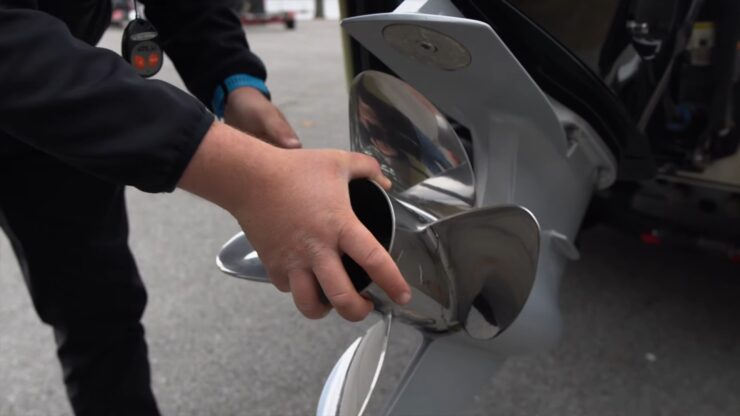
What happens if prop is too big?
If a propeller is too big for a boat, it can cause several problems. The most common issue is that the engine may not be able to reach its maximum RPMs, which can result in poor performance and reduced fuel efficiency. The boat may also struggle to get on plane, which can be dangerous in rough water conditions.
Propeller that is too large may put too much strain on the engine, causing it to overheat or wear out faster. The increased strain can also cause damage to the propeller shaft, bearings, and other components of the propulsion system.
Final Verdict
Now you’ve known about bad prop hub symptoms. A bad prop hub may seem easy to fix.
It can be a sign of water pump impeller failure, a blocked-up cooling system, or propeller engine failure. Keep a close eye out for symptoms before a spun prop hub causes damage and commotion.
Happy boating!
I’m Liam Jackson, the proud owner and driving force behind KayakPaddling.net. Born somewhere in the expansive beauty of the United States, I’ve nurtured a lifelong passion for kayaking and fishing that has led me to explore the far corners of our nation’s waterways.
Related Posts:
- 15 Best Baitcasting Reel Under $100 2024 - Improve…
- 16 Best Kayak For Beginners 2024 - Kayaking Adventure Gear
- 17 Best Trolling Reels 2024 - Enjoy your Fishing Adventure
- Heavy Duty Fishing: 11 Best Rods And Reels For Big Fish 2024
- 10 Best Power Tilt and Trim Fluid Alternative 2024 -…
- 16 Best Kayak Fishing Paddles 2024 - Affordable Fishing Gear

